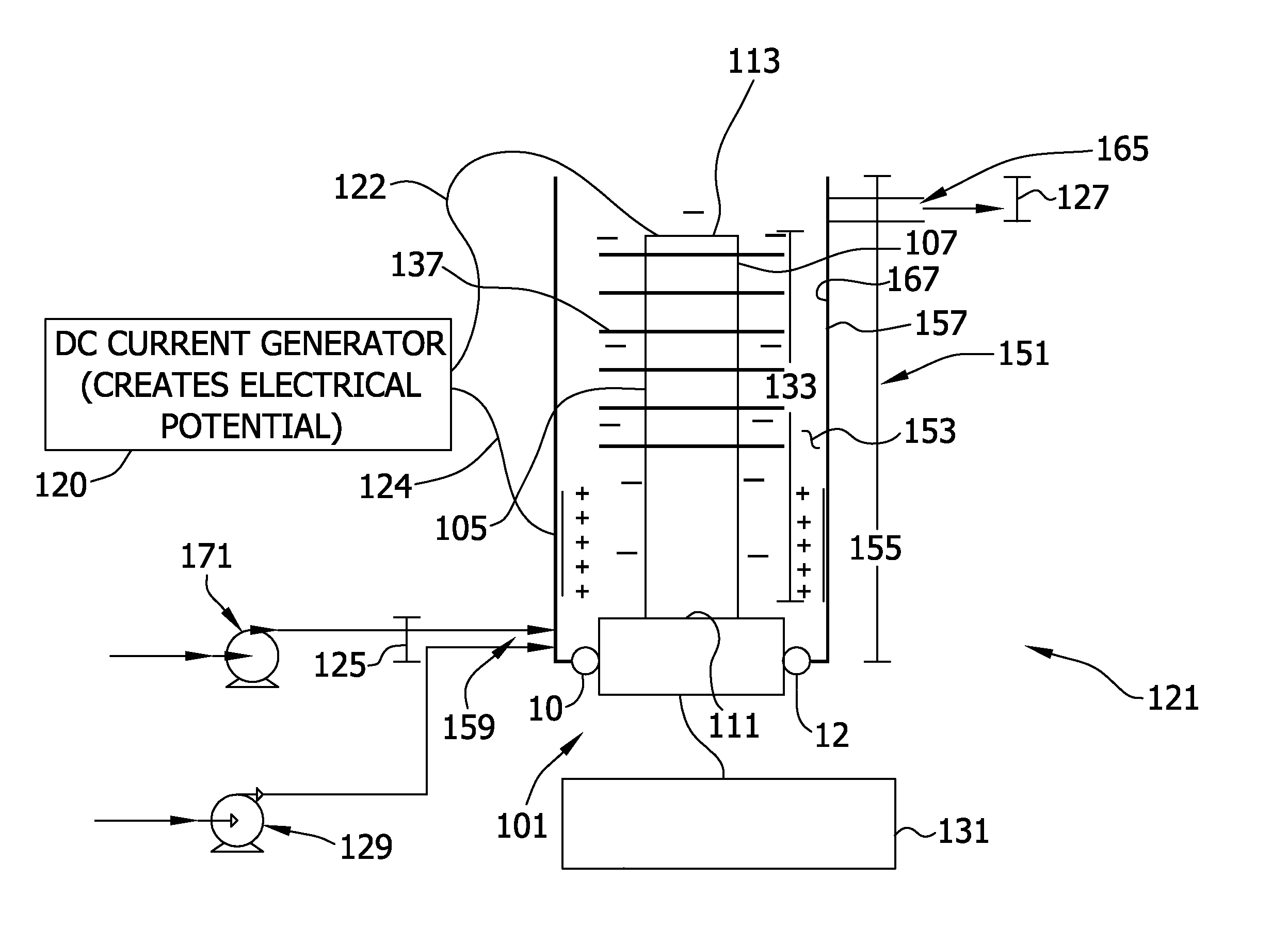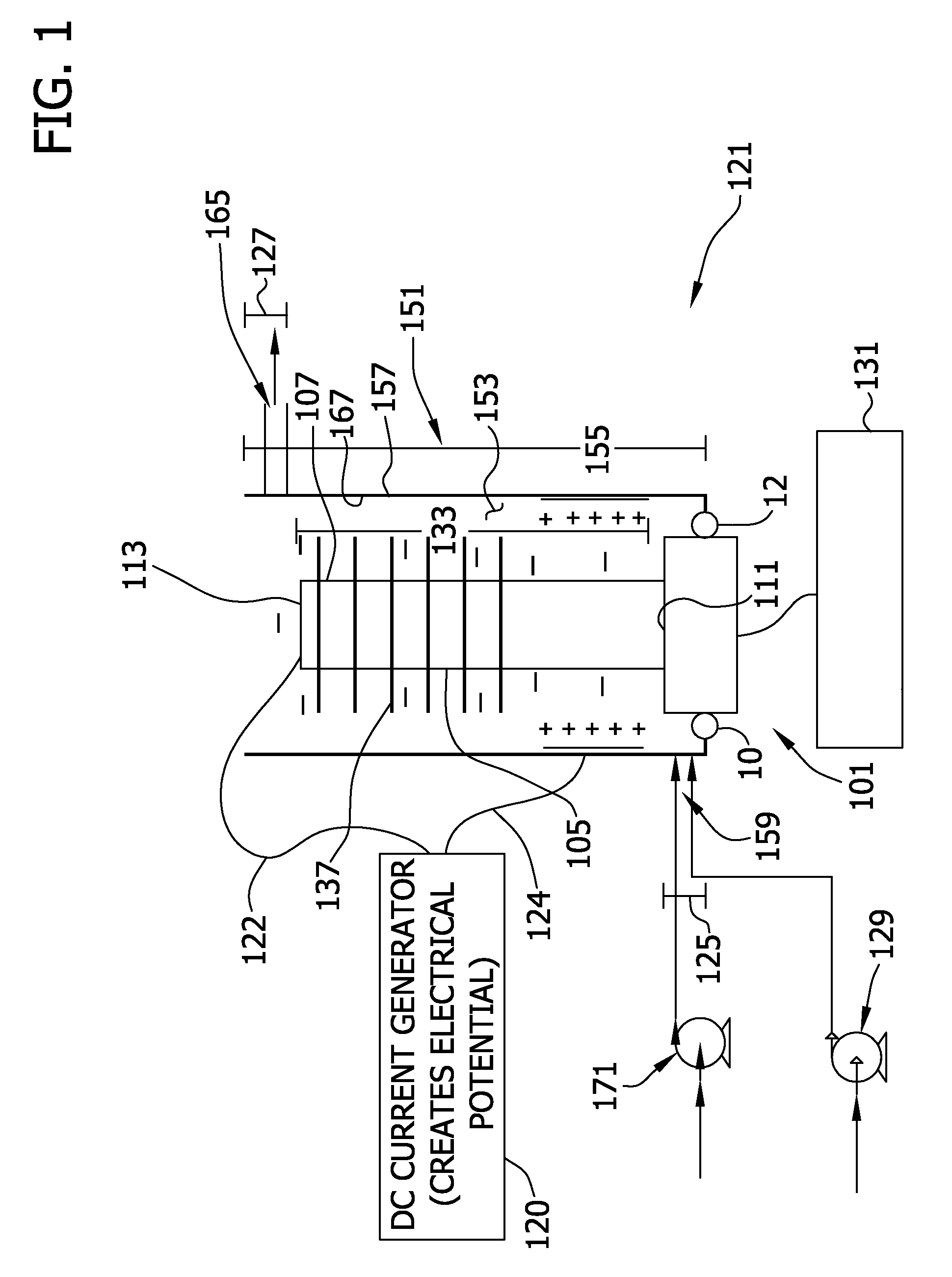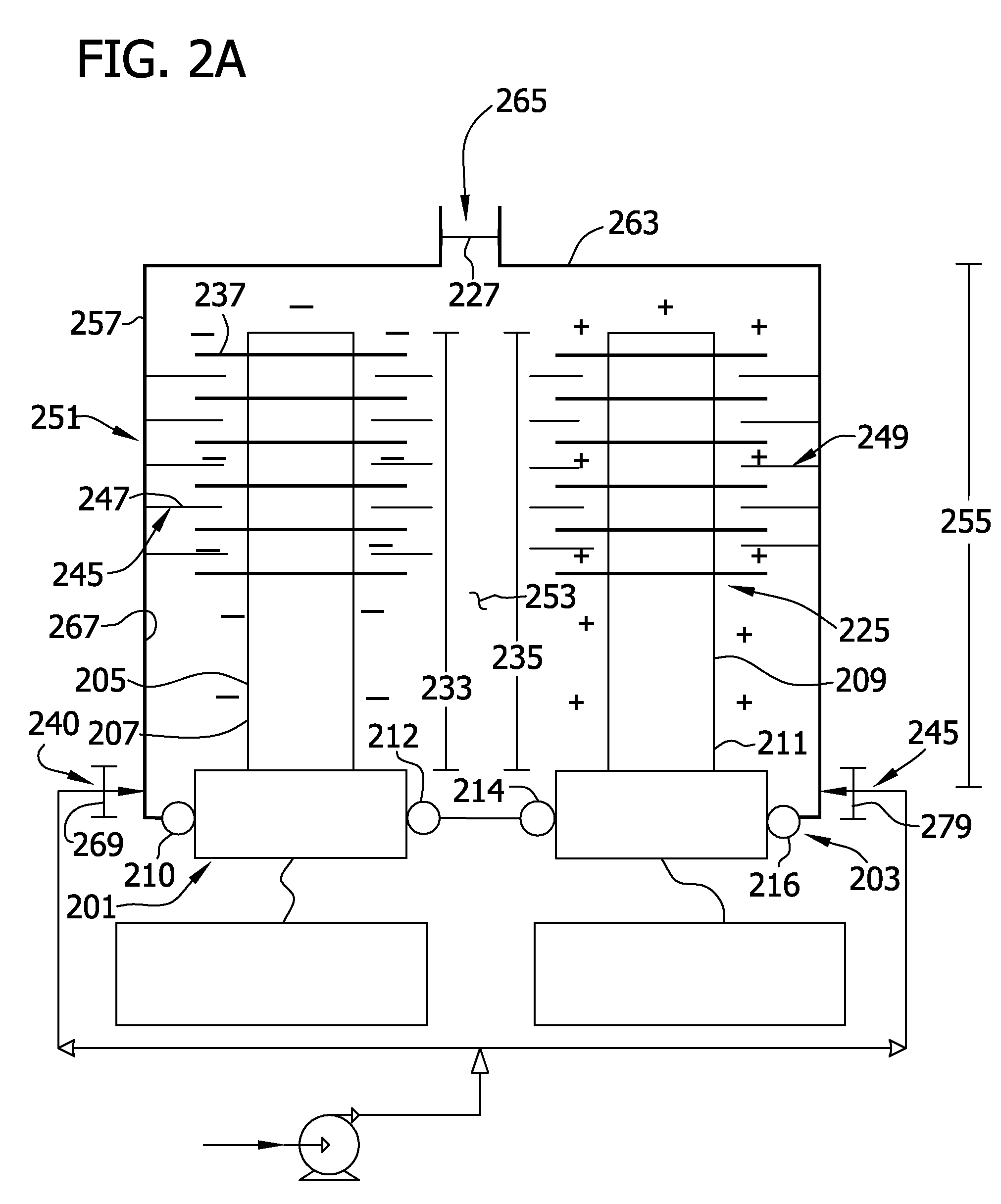Treatment chamber for separating compounds from aqueous effluent
a technology for separating compounds and aqueous effluent, which is applied in the direction of electrochemical treatment of water/sewage, disinfection, energy-based chemical/physical/physico-chemical processes, etc. it can solve the problems of increasing the time and cost of the removal of unbound dyes, requiring large volumes of adsorbent to perform effectively, and reducing the efficiency of the removal process. , to achieve the effect of reducing the hydrodynamic boundary layer, reducing the tim
- Summary
- Abstract
- Description
- Claims
- Application Information
AI Technical Summary
Benefits of technology
Problems solved by technology
Method used
Image
Examples
Embodiment Construction
[0024]The present disclosure is generally directed to a treatment chamber for removing compounds from aqueous effluent. Specifically, in one embodiment, the treatment chamber is capable of removing compounds such as nitrogen, chlorine, and oxygen from waste water, such as through the process of electrolysis. For example, the treatment chamber is used in processes using both ultrasonics and electrolysis to degrade compounds such as water and ammonia into less complex components (e.g., oxygen, nitrogen, hydrogen, and the like). Additionally, the processes can be used in the reduction of metal ions to precipitate the metals out of solution (e.g., gold, copper, silver, and the like. In another embodiment, the treatment chamber removes dyes and reactants from textile effluent. In yet another embodiment, the treatment chamber removes microorganisms and other contaminants from drinking water.
[0025]FIG. 1 provides a treatment chamber, generally indicated at 121, for removing compounds from ...
PUM
| Property | Measurement | Unit |
|---|---|---|
| pressure | aaaaa | aaaaa |
| pressure | aaaaa | aaaaa |
| frequency | aaaaa | aaaaa |
Abstract
Description
Claims
Application Information
 Login to View More
Login to View More - R&D
- Intellectual Property
- Life Sciences
- Materials
- Tech Scout
- Unparalleled Data Quality
- Higher Quality Content
- 60% Fewer Hallucinations
Browse by: Latest US Patents, China's latest patents, Technical Efficacy Thesaurus, Application Domain, Technology Topic, Popular Technical Reports.
© 2025 PatSnap. All rights reserved.Legal|Privacy policy|Modern Slavery Act Transparency Statement|Sitemap|About US| Contact US: help@patsnap.com



